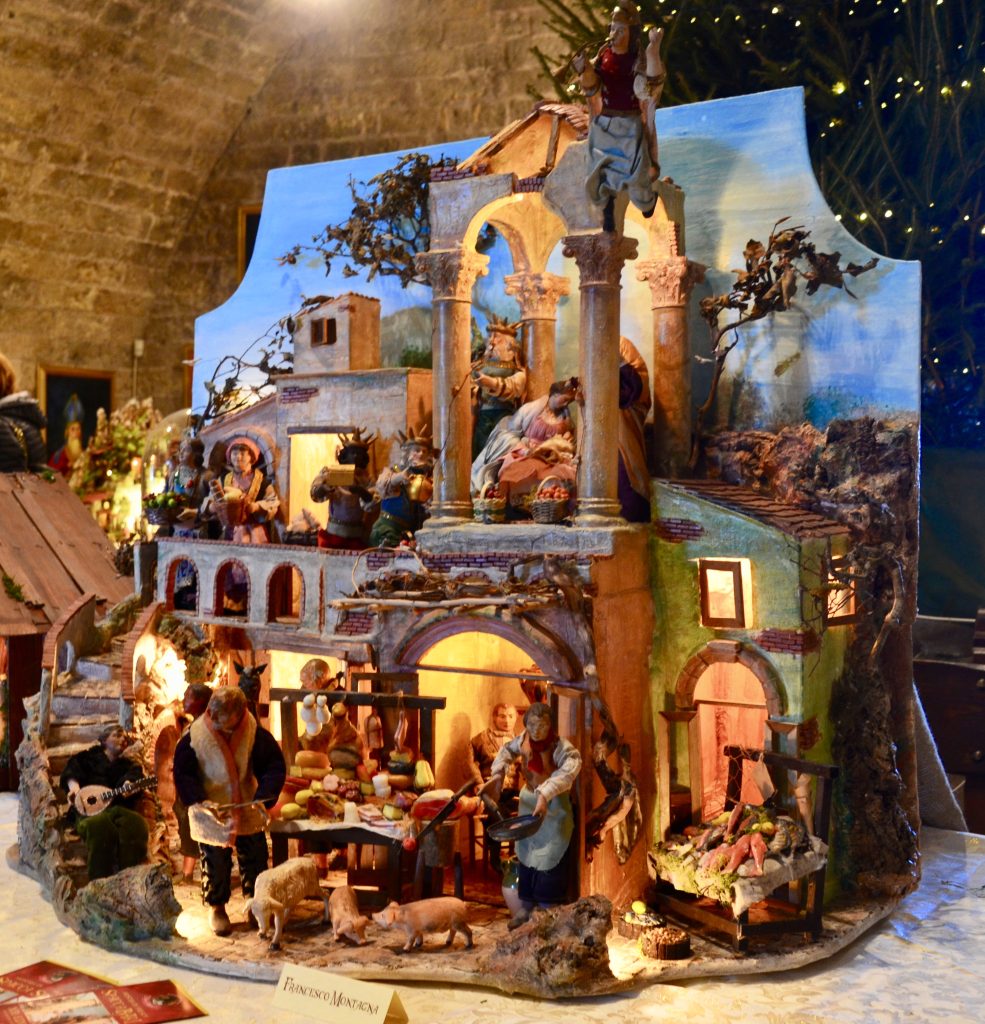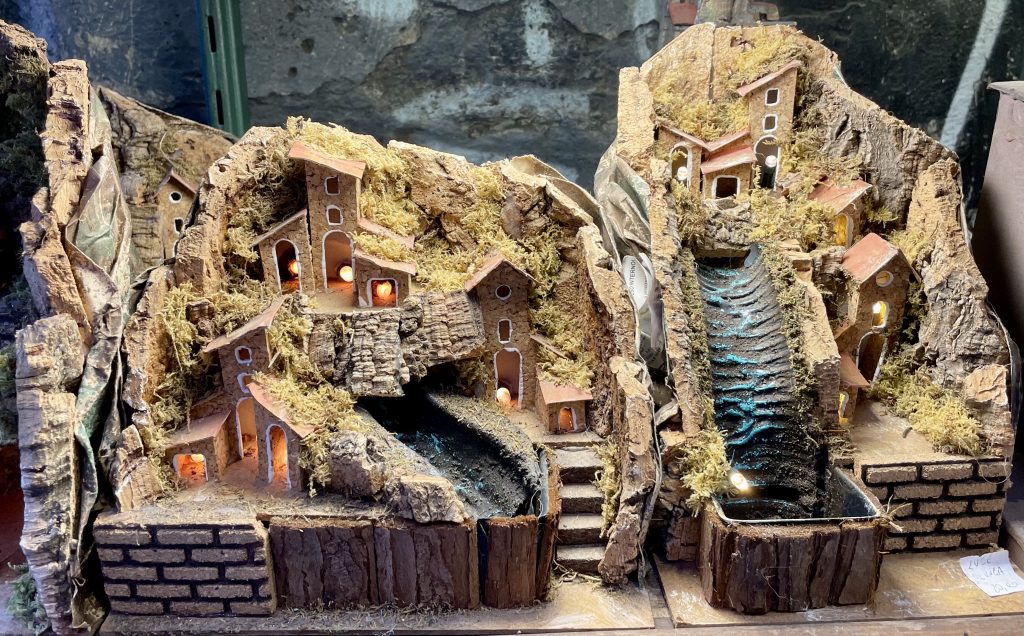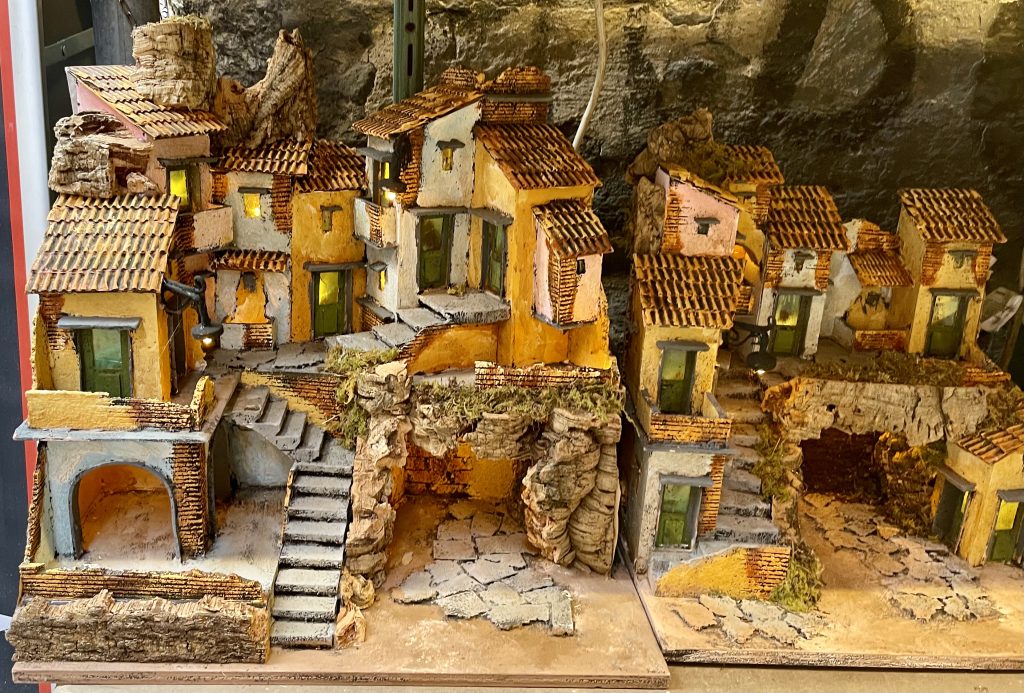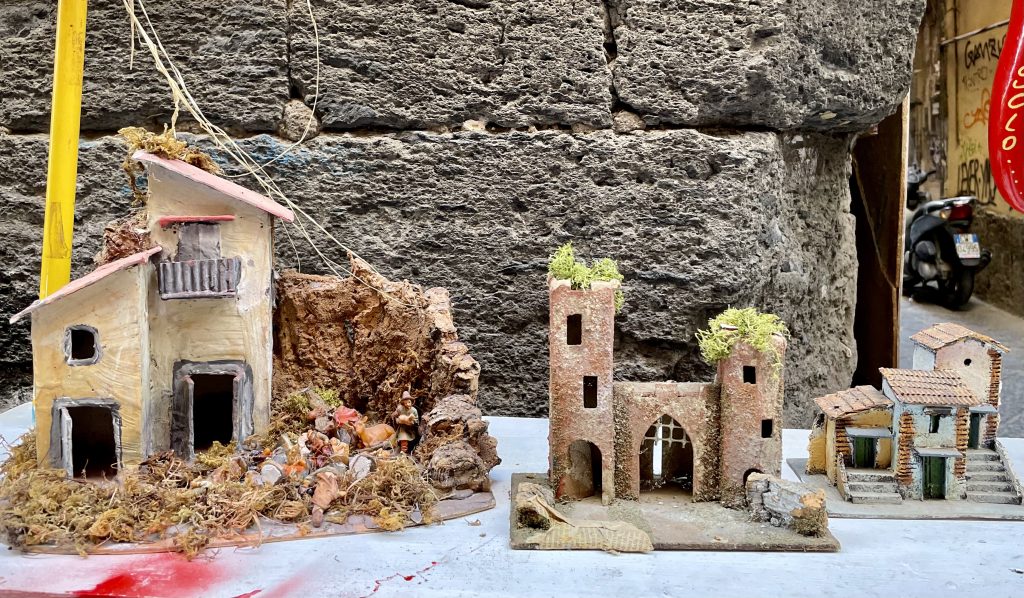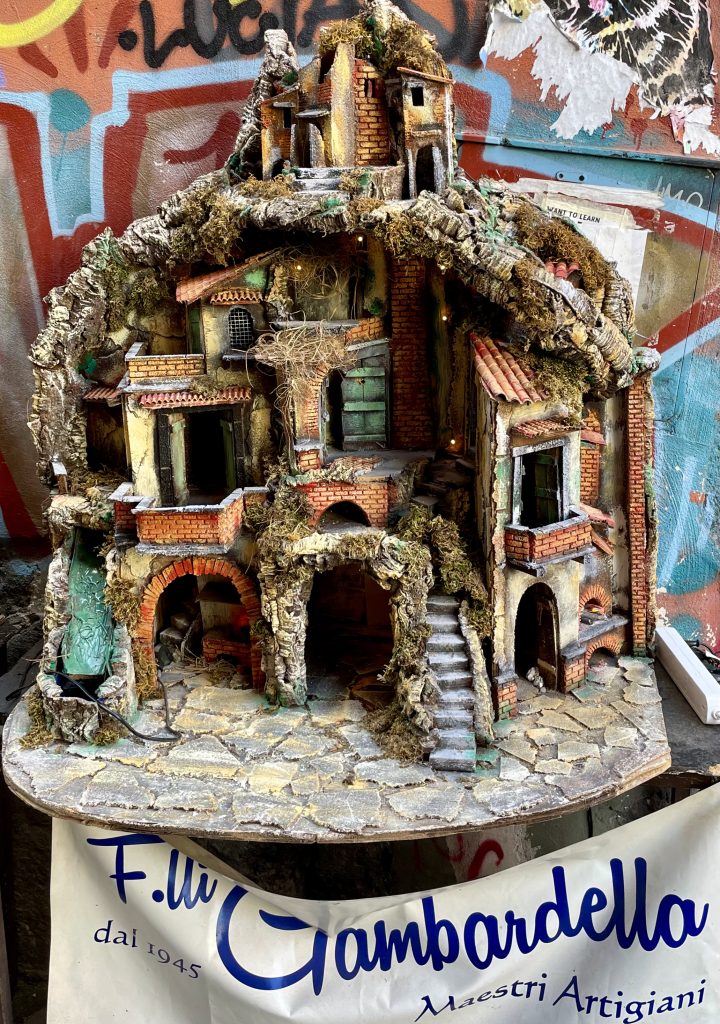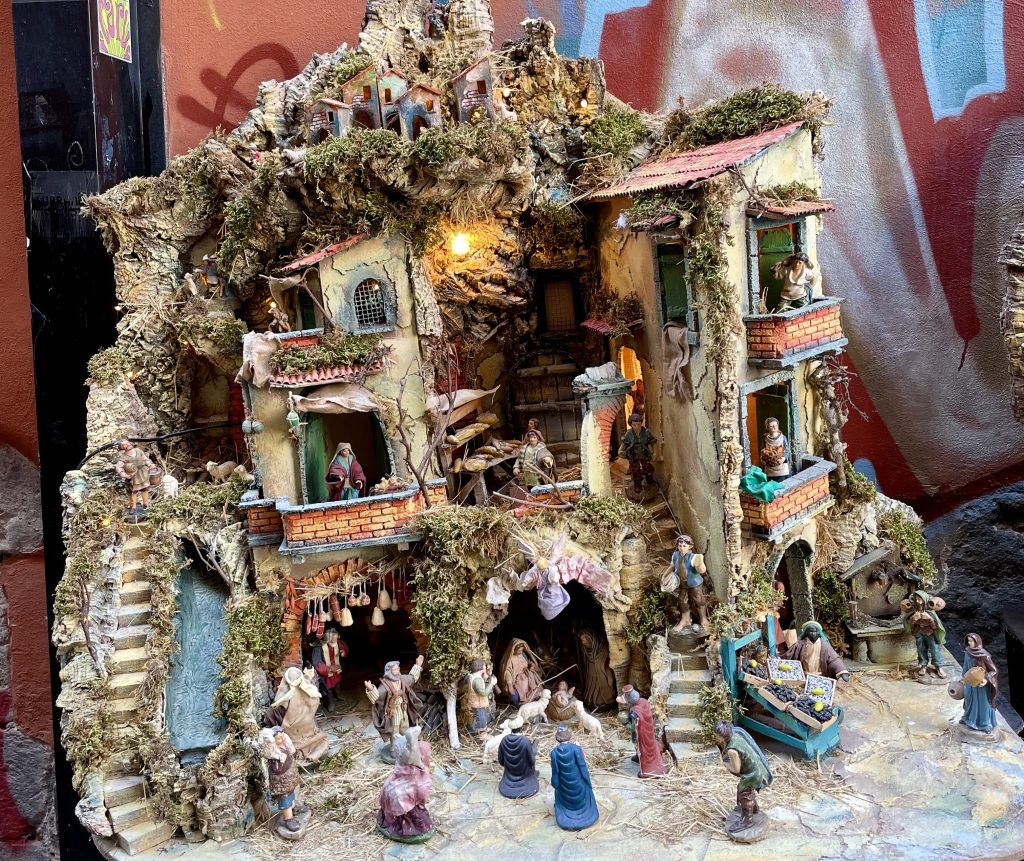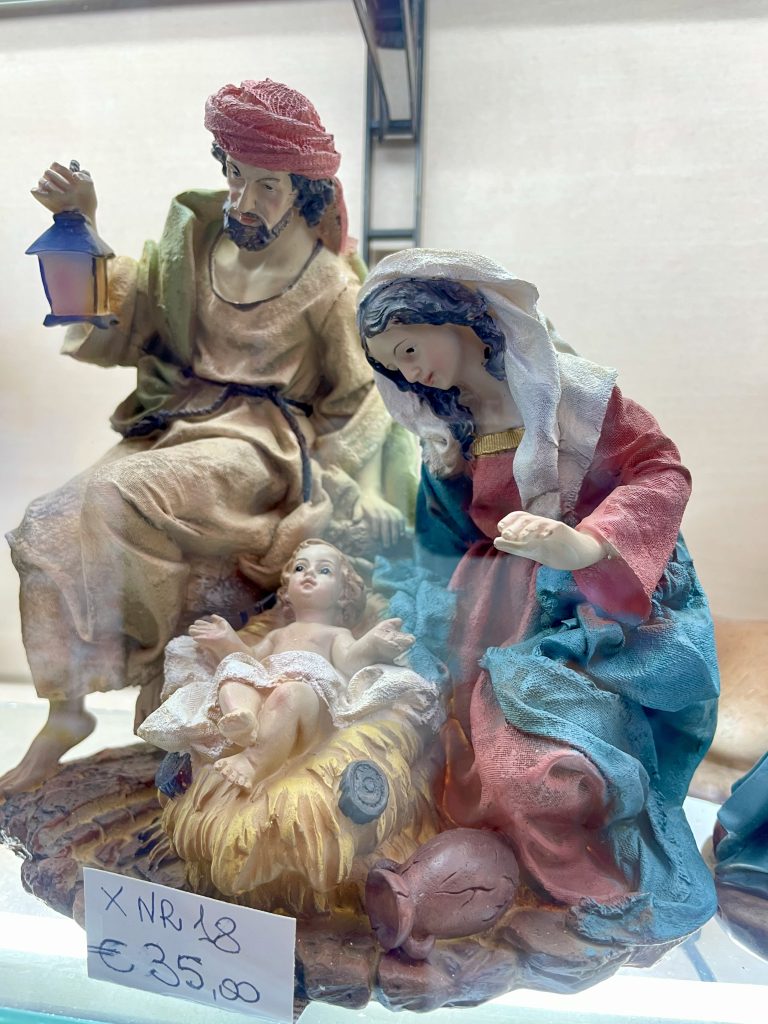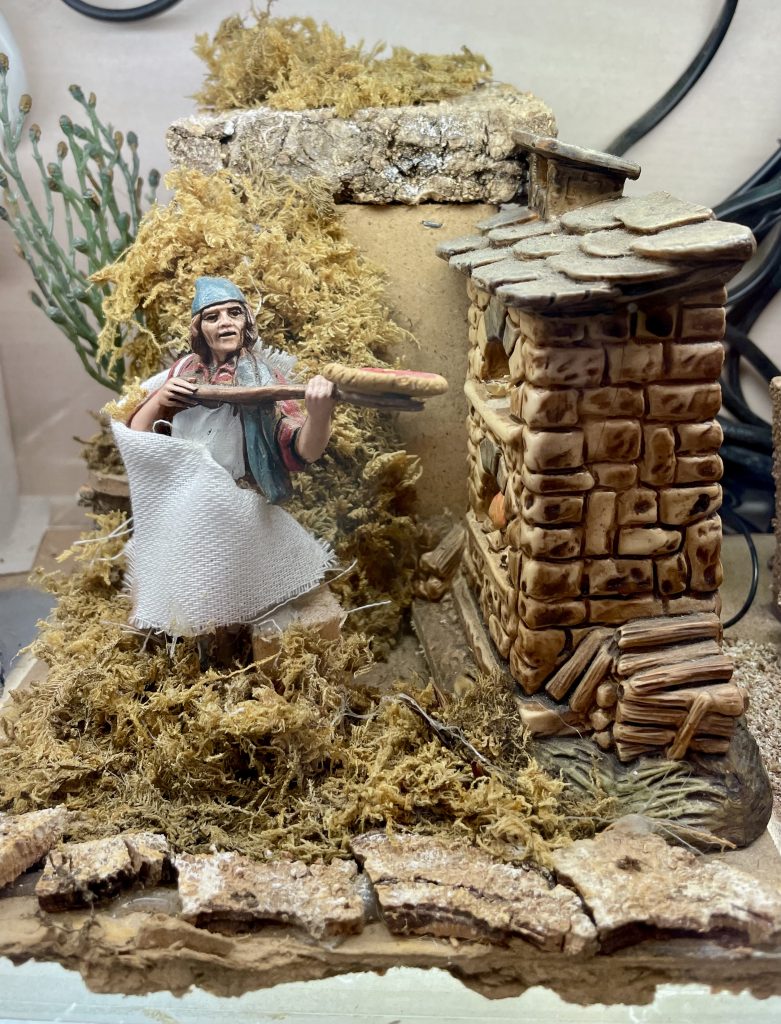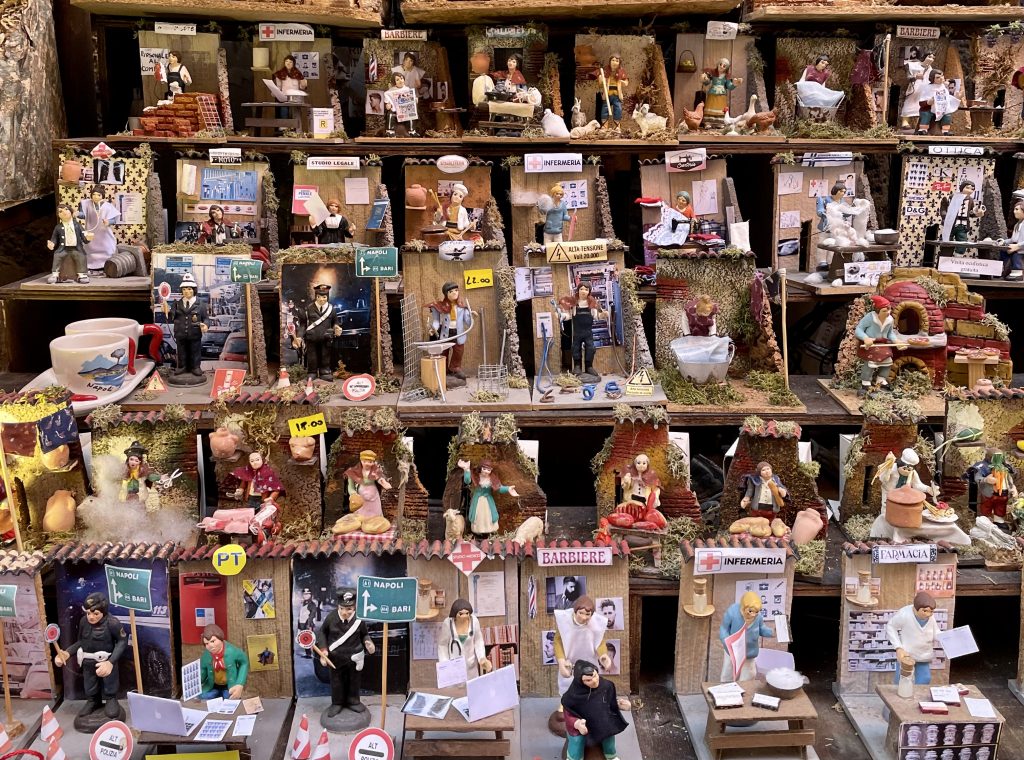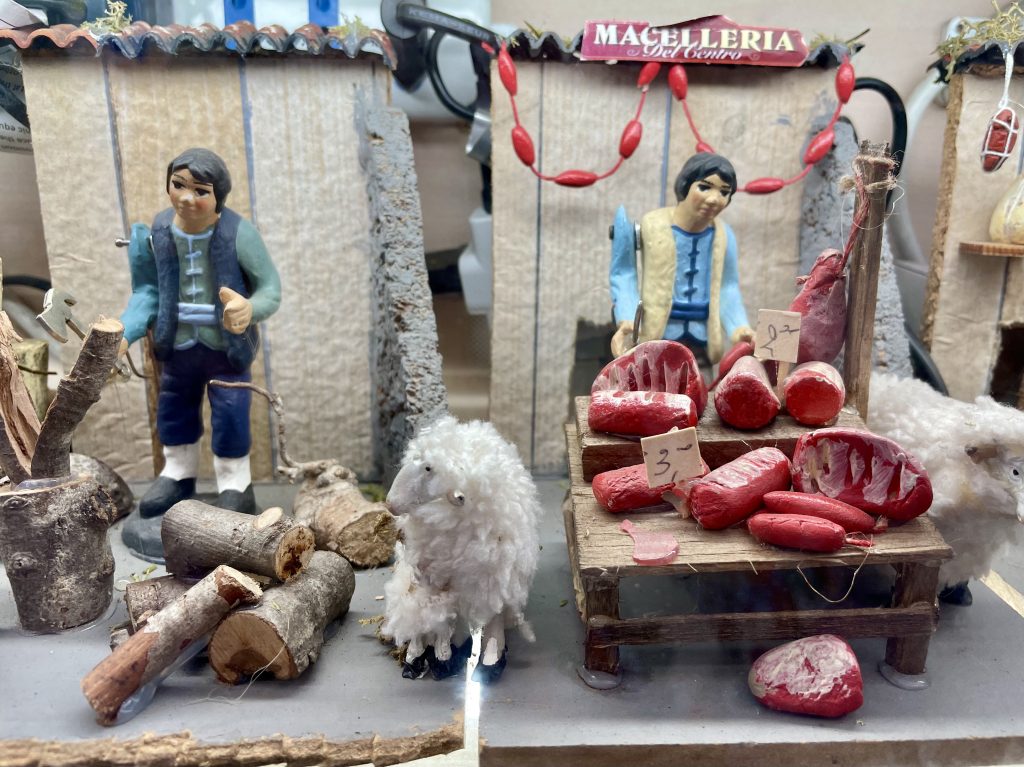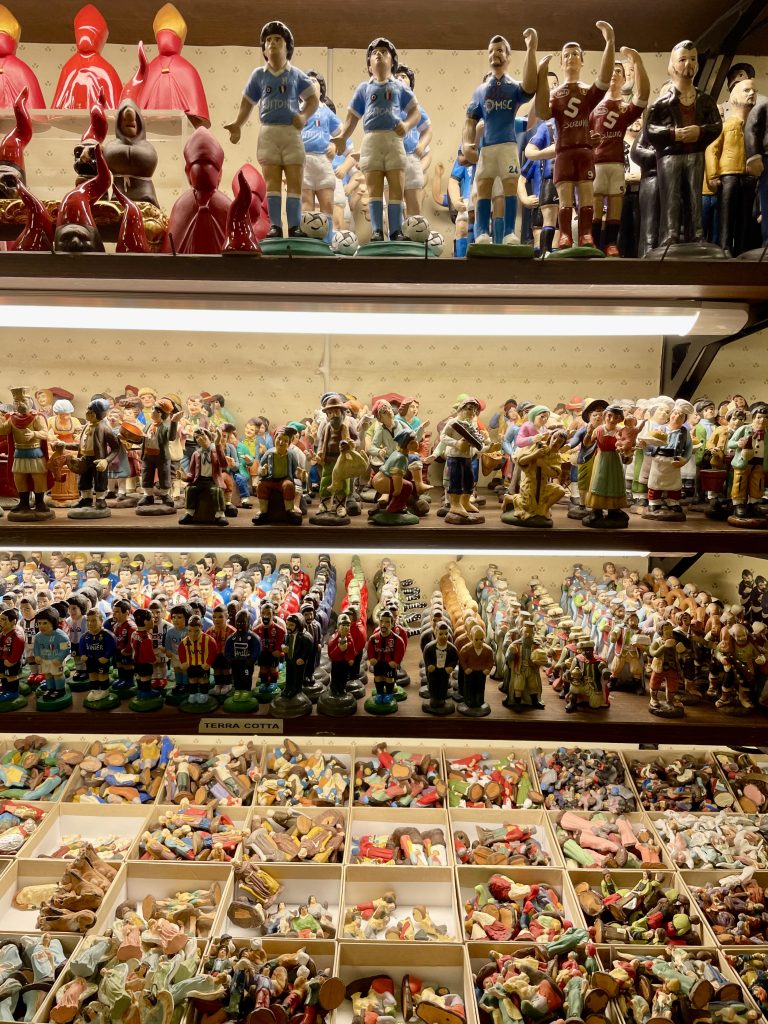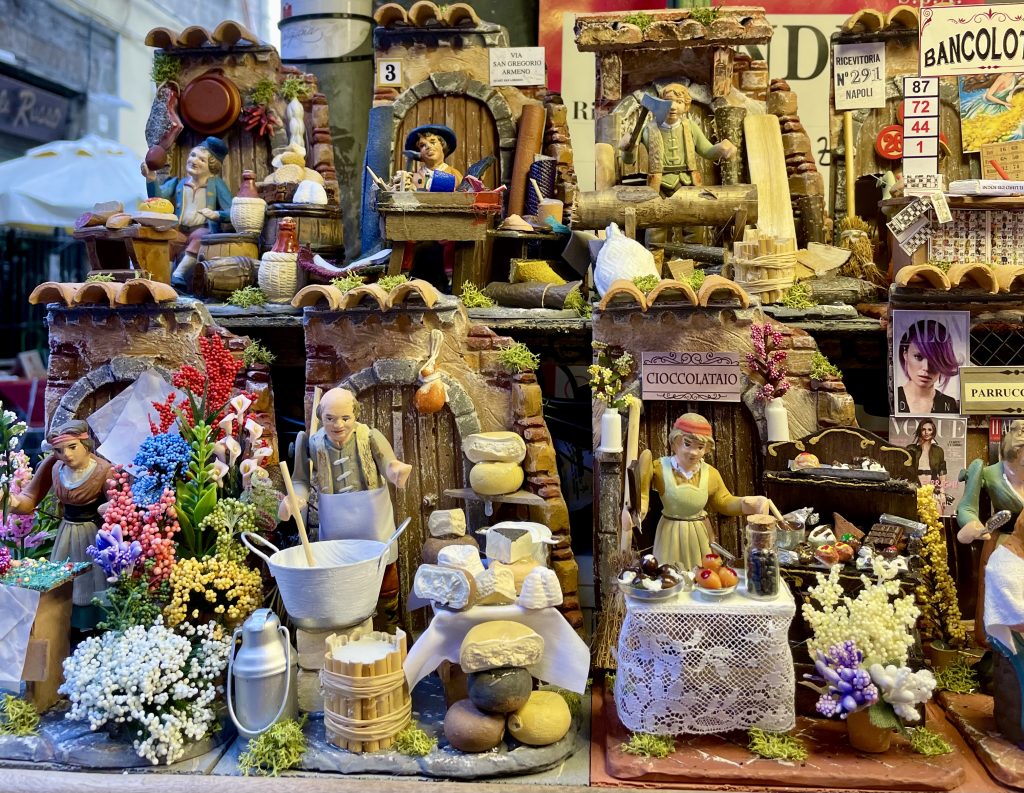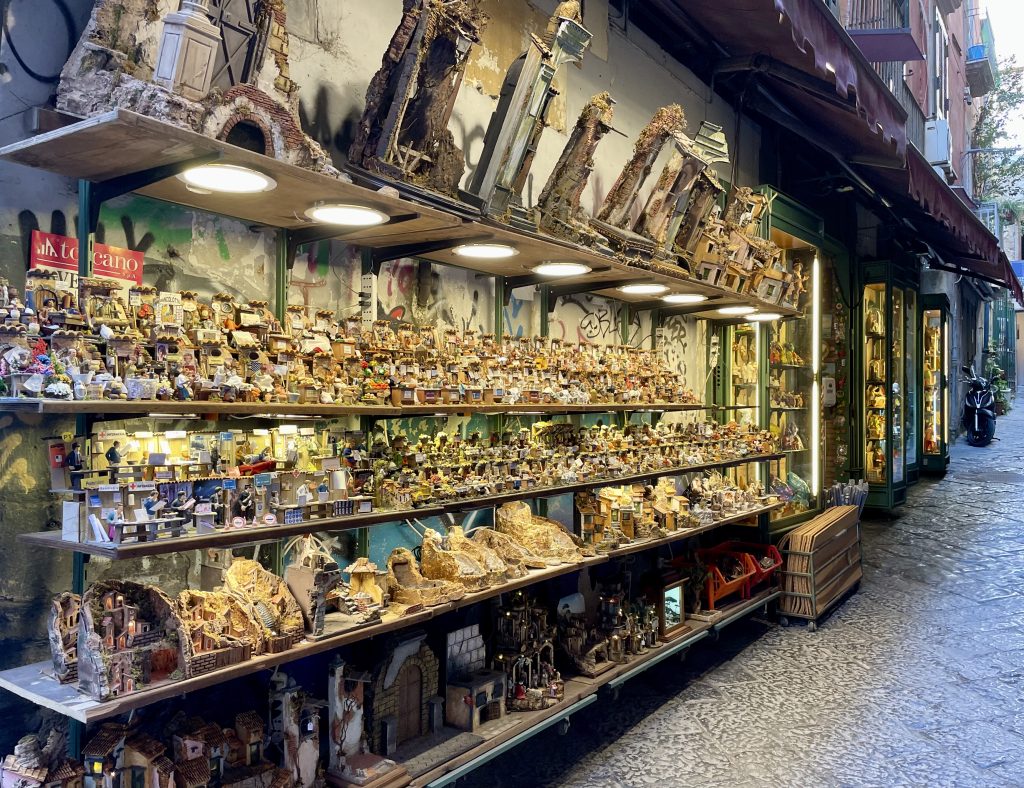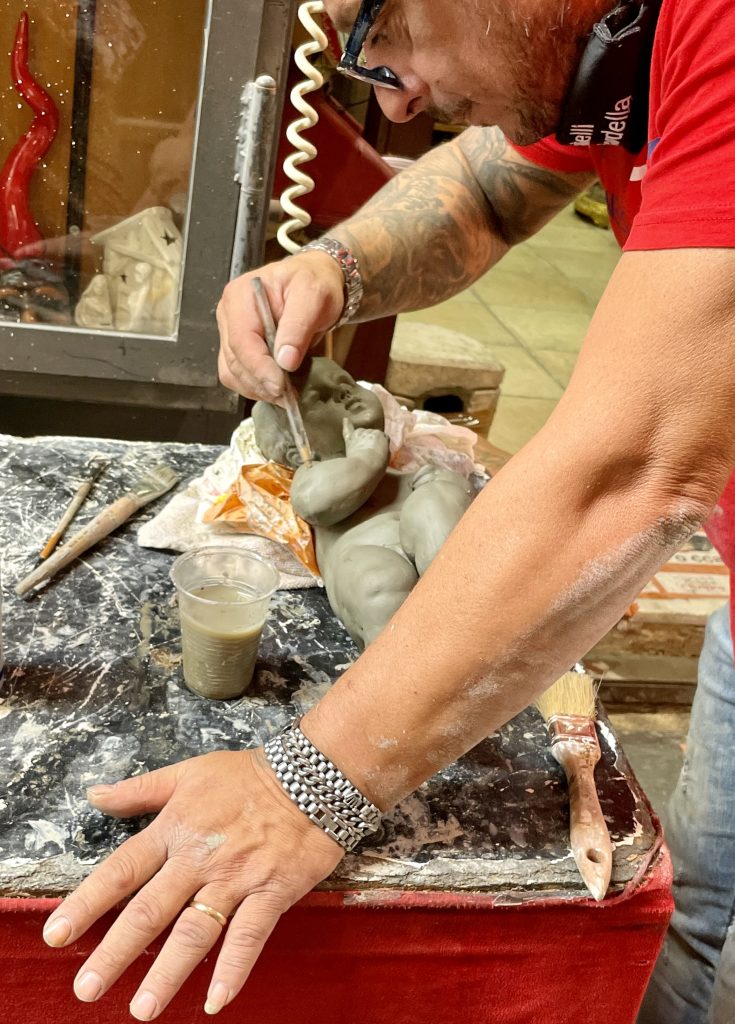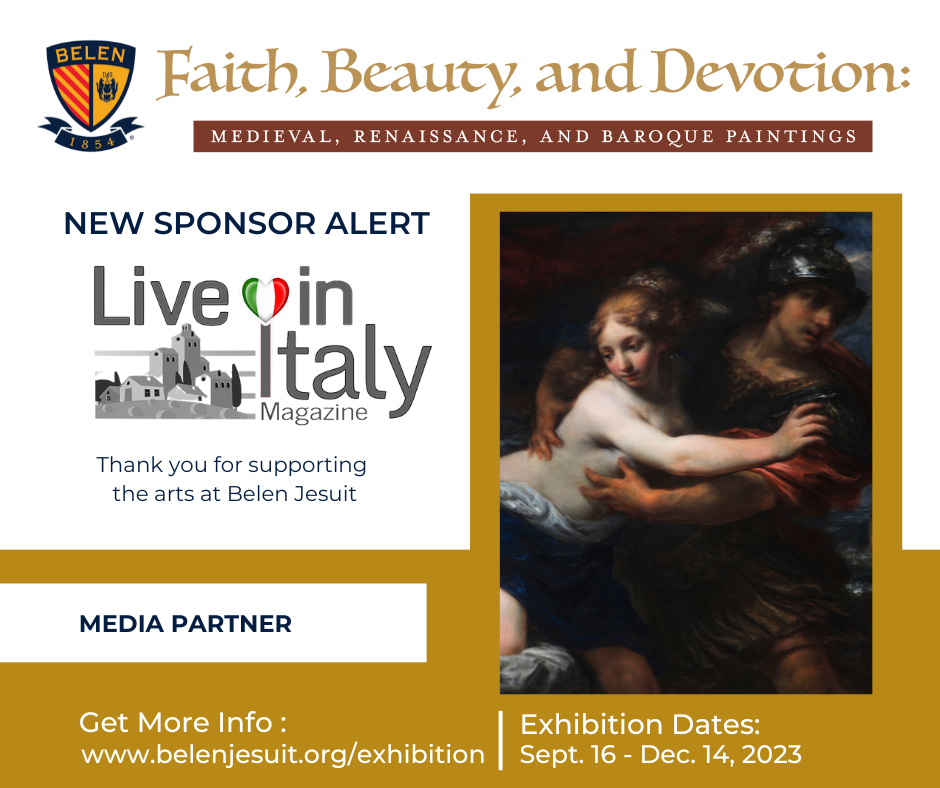I love Nativity scenes. From the time I was a child, I had the job of arranging the Nativity under our tree. Each year, I would gently place the plaster figures in and around the stable. The Holy Family was inside while the Wise Men, shepherds, and animals gazed on them from outside. On top of the manger, I hung the angel to guard the babe and other participants.

Over the years, my husband and I have had a number of Nativity scenes. From the traditional scene we had when we first married to the modern porcelain set we have today, each has been an important part of our Christmas. Even when we do not put up a tree, I take out the Nativity scene. It would not be Christmas without it.
In Italy, families take pride in creating Nativity scenes in their homes and churches. Did you realize that the Nativity scenes have their roots in Italy?
The History of Nativity Scenes
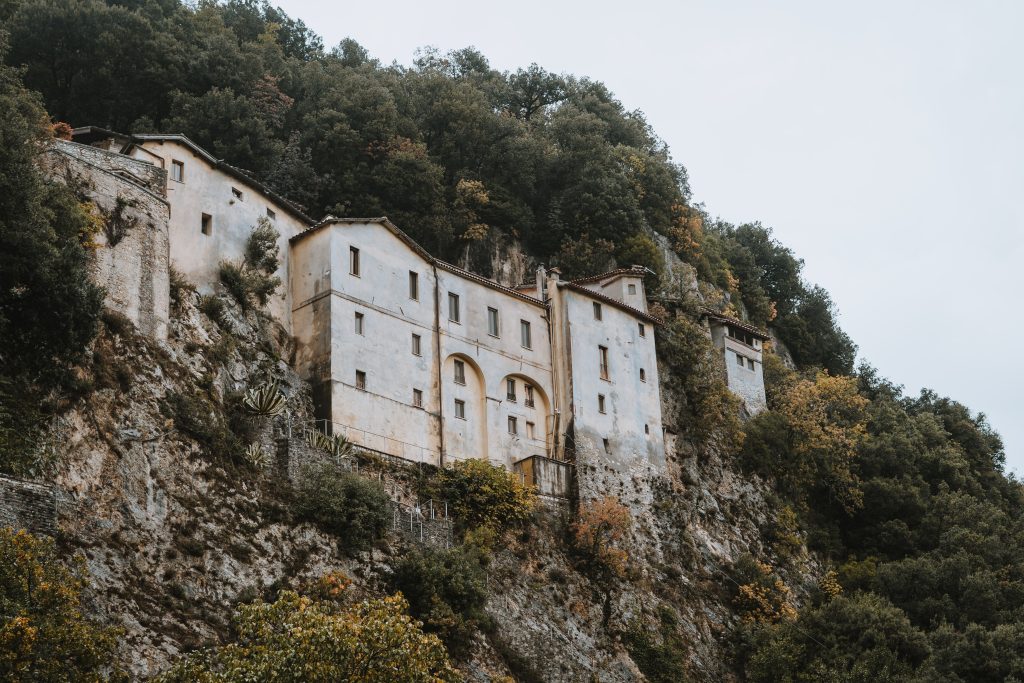
Midway between Rome and Assisi, the village of Greccio, Italy, clings to the side of a hill. You may not know of Greccio, but if you have a Nativity scene in your home, it has its roots there.
St. Francis of Assisi was very devoted to the Christ child and wanted to share what he saw on a visit to the site of the original Nativity in Bethlehem. In 1223, the saint recreated the Nativity scene by building the manger; using hay, live animals, and humans; and saying Mass in a cave in Greccio.
He wanted to help his followers understand that Christ was born into a world like theirs. Instead of a golden palace, the babe entered the world in a stable. Rather than a crib, he slept in a manger. Instead of a life of opulence and grandeur, Christ lived in a world of poverty, simplicity, and humility.
Nativity Scenes Become Popular
The popularity of the Nativity grew among the common people. In 1291, Pope Nicholas IV ordered the installation of a permanent Nativity in Rome’s Basilica di Santa Maria Maggiore. Nativity scenes occupied an important place in Renaissance art. You might recognize paintings by Fra Angelico, Sandro Botticelli, Benozzo Gozzoli, Andrea Mantegna, and others.
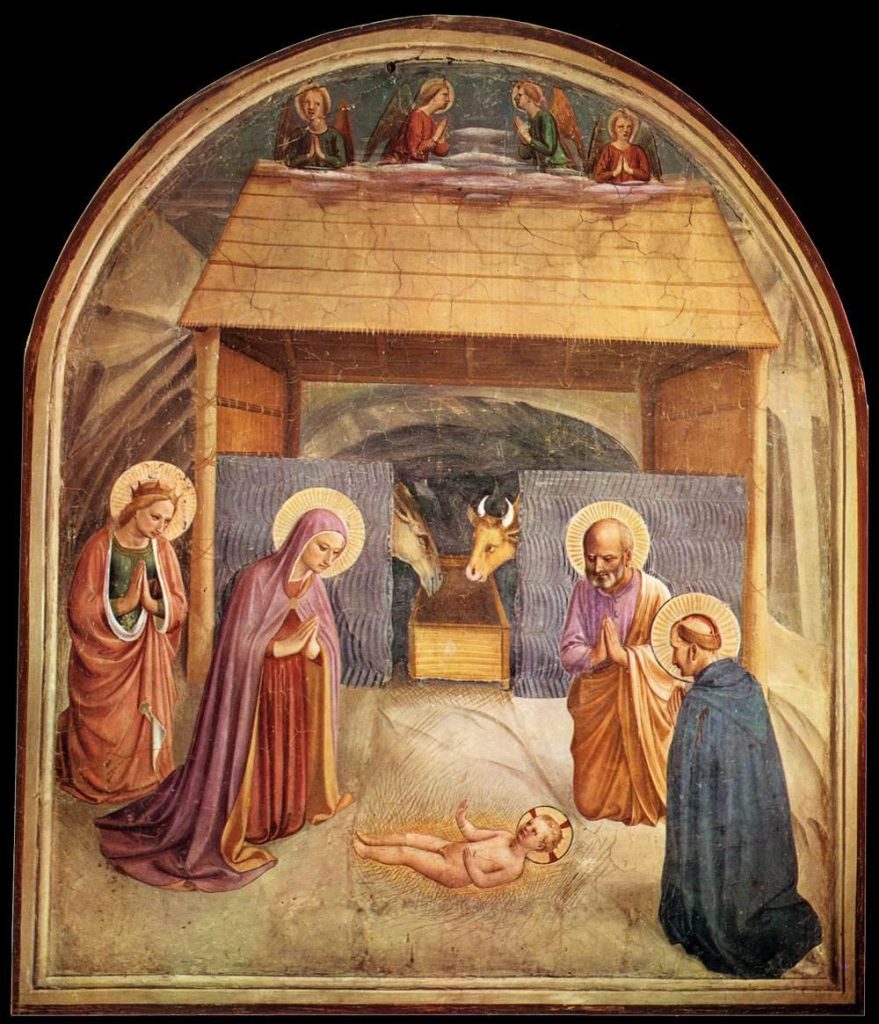
At the same time, sculptors began crafting Nativity figures of wood and clay. By the mid-1500s, the scenes were becoming popular throughout the Italian peninsula but particularly in Naples and southern Italy. From the 18th century on, creating the Nativity scenes has been a focal point for Neapolitan artisans.
The Presepi
Traditionally, Italians put up the presepi (From the Latin term for manger, it is a Nativity scene) on December 8. All presepi have a number of common elements—the stable, Mary, Joseph, the crib, and the Baby Jesus. The infant is not in the crib until Christmas Eve. The settings for many of the presepi are, most often, barns, stables, caves, or the like.

A large presepe in Bari 
Presepe in Bari
There are more elaborate presepi, however. Embracing St. Francis’s lesson that Christ lived as we do, many of the complex presepi are whole villages that reflect daily life. The presepi are large or small, traditional or modern. Many contain special features—fountains, mills, ovens, fires (tiny red lights that resemble burning logs), moving characters.
The Characters
Because the Nativity scene represents the village, the “shepherds” have come to represent the commoners—the bakers, butchers, fishermen, and others. Instead of showing these people in a static, standing position, these characters “pose” as they would in everyday life.
Interestingly, some presepi have become more modern and include figurines of sports stars, politicians, actors, and more. Artisans say this is not only to interest the young in the custom, but also to reflect modern life.
Via San Gregorio Armeno, Naples
If you get to Naples, be sure to take time to walk down Via San Gregorio Armeno. The crowded pedestrian-only street that is home to the presepe artisans and shops. You’ll find presepi of all sizes, from tiny ones to large ones that are more than a meter tall. As you stroll down the street, note the thousands of figurines and accessories available.

Shop on Via San Georgio Armeno
If you are lucky, you’ll be able to see artisans working on the wood or terracotta figurines of the presepi. They fabricate the mangers and figures which can cost anywhere from a few dollars to several thousand dollars.
Also be sure to visit the Museo Nazionale di San Martino, home to exhibits that recount the city’s history. Among the exhibits, you’ll find a collection of Neapolitan presepi and, among them, the Presepe Cuciniello. With more than 800 pieces (170 characters, 80 animals, 30 angels, and 400 objects), the Cuciniello is the largest presepe in the world….. Maybe….
Battle of the Largest Presepi
For years, Naples has claimed that the Cuciniello is the largest Nativity scene in the world. Built by Neapolitan architect, Michele Cuciniello, the presepe dates to 1879. Cuciniello donated it on condition that he set up the scene and place the shepherds. The Presepe Cuciniello has remained as its author set it up more than 100 years ago.
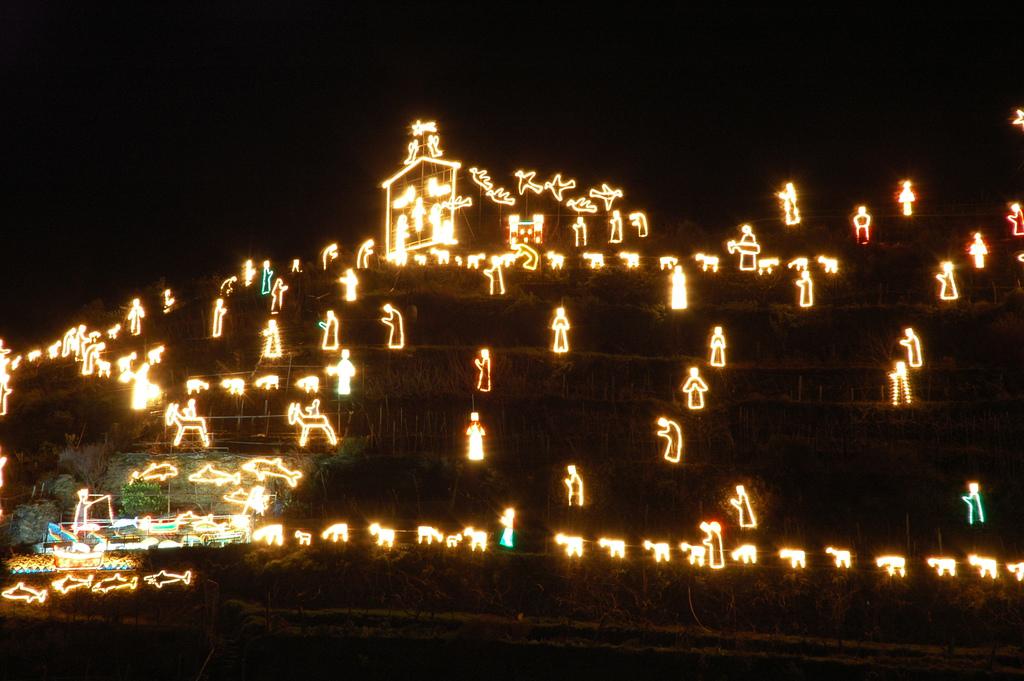
Some 400 miles north of Naples, the town of Manarola claims it has the largest Nativity scene in the world. Unlike its Neapolitan rival, the Presepe di Manarola is life-size and shines down on the town from the vineyards above. Constructed by former railway worker Mario Andreoli, the Manarola Nativity scene started with one cross in 1961 and has grown to have more than 300 characters connected by seven miles of electric cables.
Manarola’s presepe is in the Guinness World Book of Records as the world’s largest Nativity Scene because of its sheer size. Traditionalists would argue that the Cuciniello is the largest because it has the most pieces.
If You Go
Should you want to see these two presepi, there are certain things you need to know. The Presepe Cuciniello is on display everyday at the museum. The Presepe Manarola illuminates the town from December 8 until late January or early February annually.


